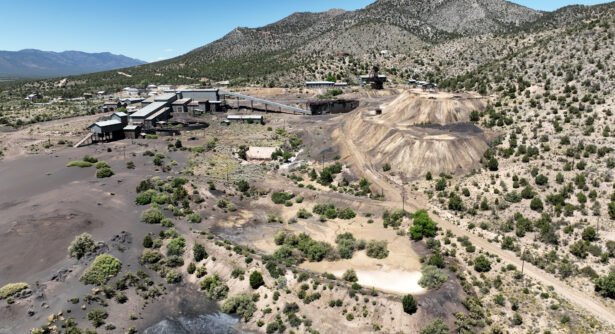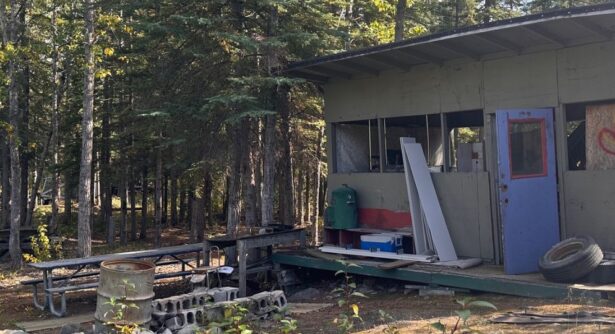
Three Basic Steps to Transform an Abandoned Property | Tres Pasos Básicos Para Transformar Una Propiedad Abandonada
Over the years, there has been a noticeable increase in the number of abandoned properties in Puerto Rico. Unfortunately, many of these sites function as illegal dumps and cause social, economic, and environmental problems. After Hurricane Maria hit the island, brownfields redevelopment became a popular topic of conversation, as these properties posed actual environmental and public health problems. Not only are brownfields a physical threat in the case of abandoned buildings, but illegal dumps are a serious threat to public health because flood waters carried trash and decomposing animals.
To transform abandoned properties or vacant lots, it is very important that preliminary evaluations and studies be performed to determine if it is cost efficient to invest in a property that could have environmental problems. In Puerto Rico, there have been many sites identified as brownfields and many developers are unaware of the potential that these sites offer. Many fear these sites without knowledge of the beneficial impact they could have in communities. Over the last 5 years of my career as a Civil Engineer in the state of Florida, I have witnessed incredible transformations. Not only have I had the opportunity to work on landfill redevelopment projects myself, but I have also learned from the successful projects of my colleagues in other parts of the United States.
If you have been asking whether it’s possible to turn vacant lots, abandoned buildings and brownfields into viable investments that are also beneficial to the community (the answer is yes!), you should know that there are three basic, but very important steps that should be followed.
Number One: Educate yourself. Yes, education is key for this type of project. Fortunately, there are organizations such as the Center for Creative Land Recycling (CCLR) that provide a vast array of resources on the subject. It is very important that you make informed decisions and can identify opportunities that exist when investing in the development of abandoned buildings or lots and brownfields. According to CCLR, there are opportunities for collaboration with investors that can benefit small businesses. They also offer a guide on federal programs and how to obtain financial assistance for the redevelopment of brownfields. They provide free technical assistance to brownfields communities. If you have questions, call them! Whether you are a neighbor, community leader, or developer with an interest of impacting the quality of life of the community it is important to know the resources that exist for redevelopment.
Number Two: Identify the correct property. It is important to have legal representation that has experience and knowledge in land development. Similarly, having direct communication with municipal leaders will also help you identify properties with potential for redevelopment. According to Law Number 31 of 2012 of Puerto Rico, municipalities must have an updated inventory of properties that have been declared public nuisances. I also urge you to not limit yourself to a specific geographic location, let alone be afraid of the redevelopment of brownfields, as there are federal grants to carry out studies to identify potential contaminants and for the site’s cleanup.
Number Three: Have a professional team that has the knowledge and experience in the development of all types of land. Having experts in the areas of environmental cleanup and design of remediation systems, experts in geotechnical studies, and experts in the design of infrastructure will facilitate the entire process. Often the firm that offers the lowest bid is hired without realizing that in most cases, you end up paying for the most expensive design. Hence the Spanish phrase that translates to “what starts cheap ends up expensive”: in other words, save a penny, lose a dollar.
I encourage you to take into consideration the reuse of existing abandoned land. Do not fear the possibility of creating a positive impact on the community. These types of investments not only benefit the developer but will also positively impact an entire country that pleads for a clean and better Puerto Rico. If there is something we have all learned after Hurricane Maria, it is that problems and disasters can turn into opportunity.
To see successful cases in the US visit the following links:
Redevelopment of Brownfields: https://www.langan.com/portfolio/category/brownfield-redevelopment/
Environmental Remediation Projects: https://www.langan.com/portfolio/category/environmental-remediation/
Tres Pasos Básicos Para Transformar Una Propiedad Abandonada
Desde hace muchos años se ha ido observando un aumento en el número de propiedades abandonadas y terrenos baldíos en Puerto Rico. Muchas de éstas se han convertido en tiraderos clandestinos causando problemas sociales, económicos y ambientales. Después que pasó el Huracán María, este tema se ha vuelto muy popular ya que el riesgo que generan estas propiedades se puede sentir muy de cerca. No tan solo fueron amenaza física en el caso de edificios abandonados, pero los tiraderos clandestinos fueron una amenaza mayor ya que las inundaciones arrastraron basuras y animales en descomposición causando problemas serios a la salud pública.
Para transformar propiedades abandonadas o terrenos baldíos es muy importante que se hagan las evaluaciones y estudios necesarios para determinar si es rentable invertir en una propiedad que pudiera contar con problemas ambientales. Muchos desarrolladores desconocen el potencial que tienen los terrenos que se han identificado como “brownfields” y le temen a la posibilidad sin darse cuenta que puede ser una buena inversión y a la vez estaría transformando toda una comunidad. ¡La buena noticia es que si se puede! En los últimos 5 años de mi carrera como Ingeniera Civil en el estado de Florida, he podido ver transformaciones increíbles. He tenido la oportunidad de trabajar en el desarrollo de terrenos baldíos que fueron utilizados como tiraderos clandestinos y también he aprendido de casos exitosos en otras partes de los Estados Unidos a través de compañeros de trabajo que se especializan en este tipo de proyecto.
Si te preguntas cómo se puede convertir una propiedad inservible a algo de utilidad para la comunidad, a continuación enumero tres pasos básicos que en mi opinión son los más importantes para la transformación exitosa de terrenos baldíos, edificios abandonados, y “brownfields”.
Número Uno: Edúquese. Sí, la educación es clave en este tipo de proyecto. Afortunadamente existen organizaciones que le pueden educar en el tema como “Center for Creative Land Recycling” (CCLR, por sus siglas en inglés). Es muy importante que tomes decisiones informadas y que puedas identificar las oportunidades que existen al invertir en el desarrollo de edificios abandonados o terrenos baldíos. Según CCLR, existen oportunidades de colaboración con inversionistas que pueden beneficiar a los pequeños negocios. También ofrecen una guía para la asistencia financiera a través de programas federales para el desarrollo de terrenos o propiedades identificadas como “brownfields”. No importa si eres un vecino, líder comunitario, o inversionista buscando mejorar la calidad de vida de la ciudadanía es necesario que aprendas de los recursos que existen para el re-desarrollo.
Número Dos: Identificar la propiedad correcta. Es importante contactar representantes legales que tengan experiencia y conocimiento en el uso y desarrollo de terrenos. De igual forma, tener comunicación directa con líderes municipales también le ayudará a identificar propiedades con potencial de re-desarrollo. Según la Ley Número 31 del 2012 de Puerto Rico, los municipios deben contar con un inventario actualizado de propiedades que se hayan declarado estorbos públicos. También le exhorto a que no se limite a una posición geográfica en específico y mucho menos le tenga temor al re-desarrollo de “brownfields” ya que existen subsidios para hacer estudios de identificación de peligros de sanidad y limpieza de terrenos.
Número Tres: Agarra un equipo de profesionales que tenga el conocimiento y experiencia en el desarrollo de todo tipo de terrenos. Contar con expertos en el área de diseño de sistemas de limpieza y remediación ambiental, expertos en geotecnia y estudios de suelos, y expertos en el diseño de infraestructura le ahorrará muchos dolores de cabeza. Muchas veces se contrata la firma que ofrezca la oferta más baja sin darse cuenta que en la mayoría de los casos, terminas pagando por el diseño más costoso. De ahí la frase “lo barato sale caro.”
Les exhorto a tomar en consideración el reutilizar terrenos abandonados. No le tema a la posibilidad de crear un impacto a la comunidad que no tan solo será de beneficio personal, sino para todo un país que ruega por un Puerto Rico limpio y libre de escombros. Si algo hemos aprendido después del Huracán María, es que los problemas y desastres se pueden convertir en oportunidades.
Para ver casos exitosos en EE. UU. visite los siguientes enlaces:
Desarrollo de Brownfields: https://www.langan.com/portfolio/category/brownfield-redevelopment/
Proyectos de Remediación Ambiental: https://www.langan.com/portfolio/category/environmental-remediation/




